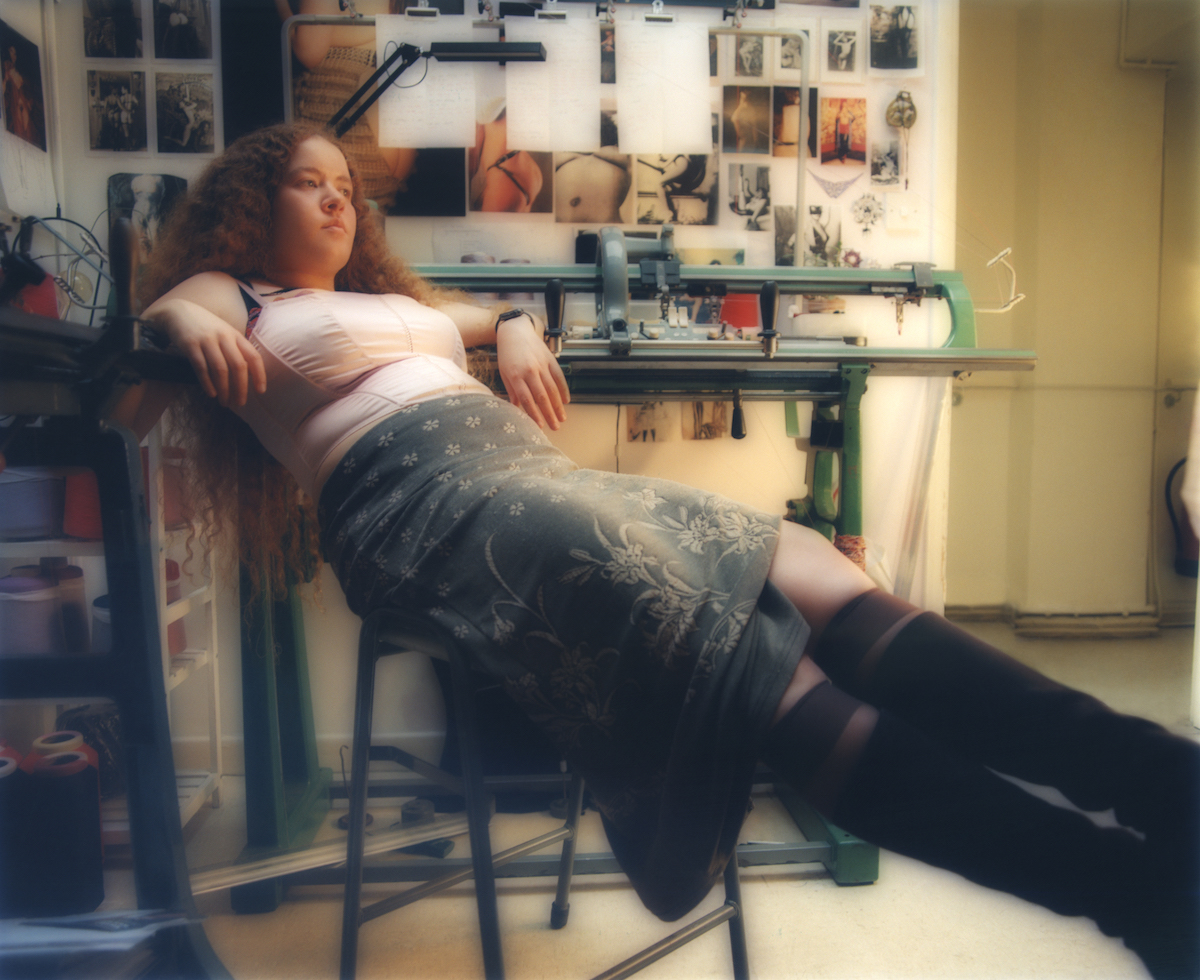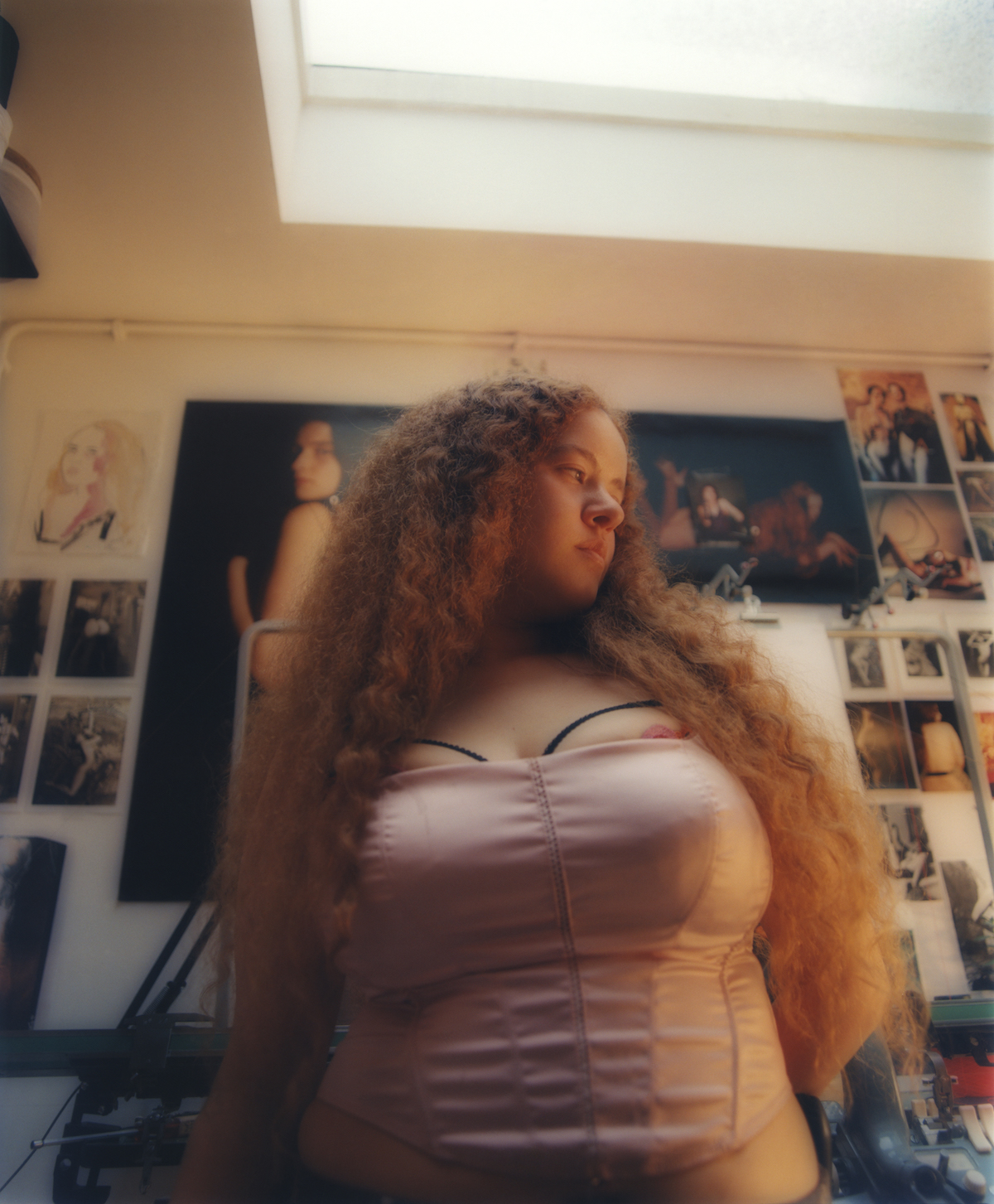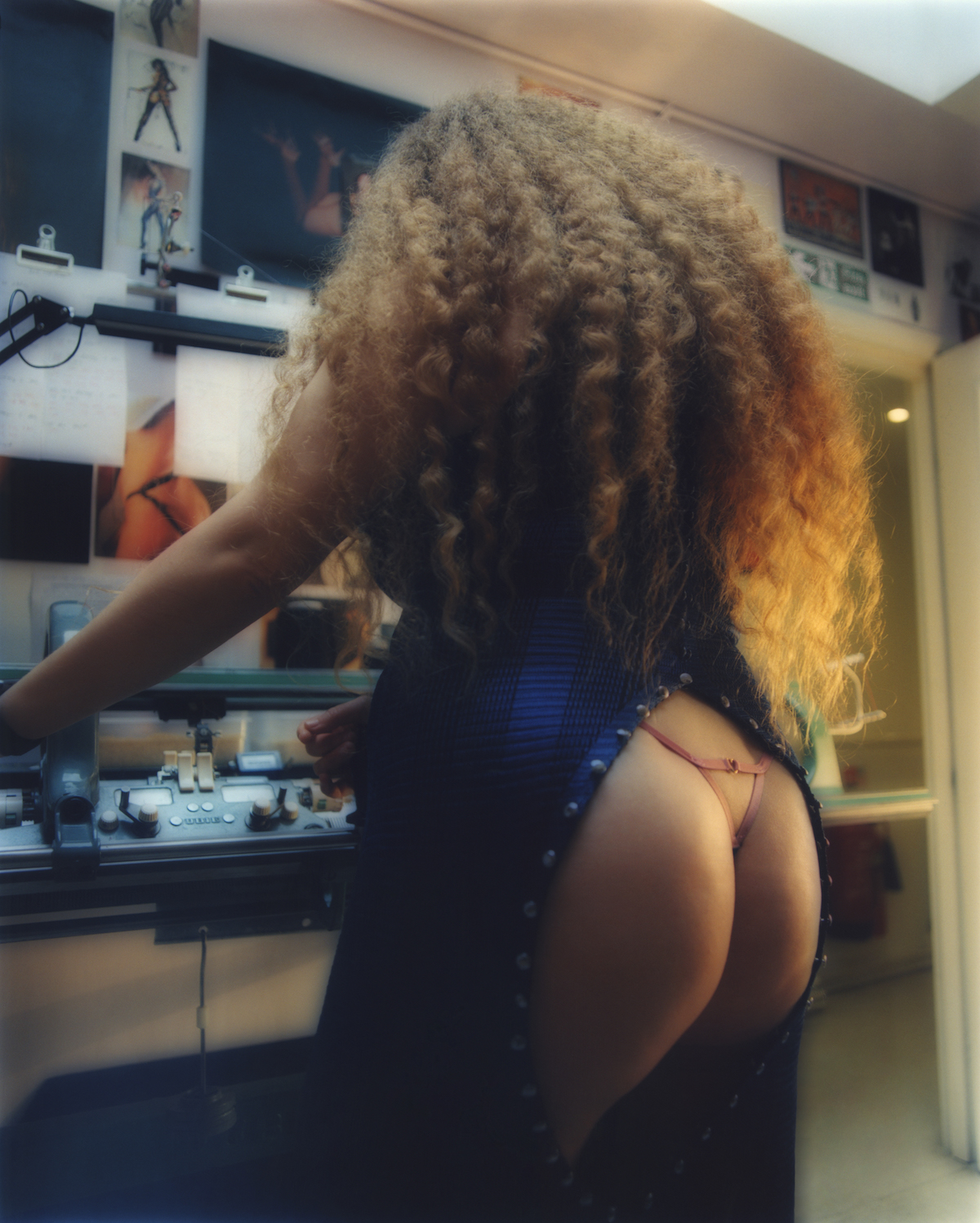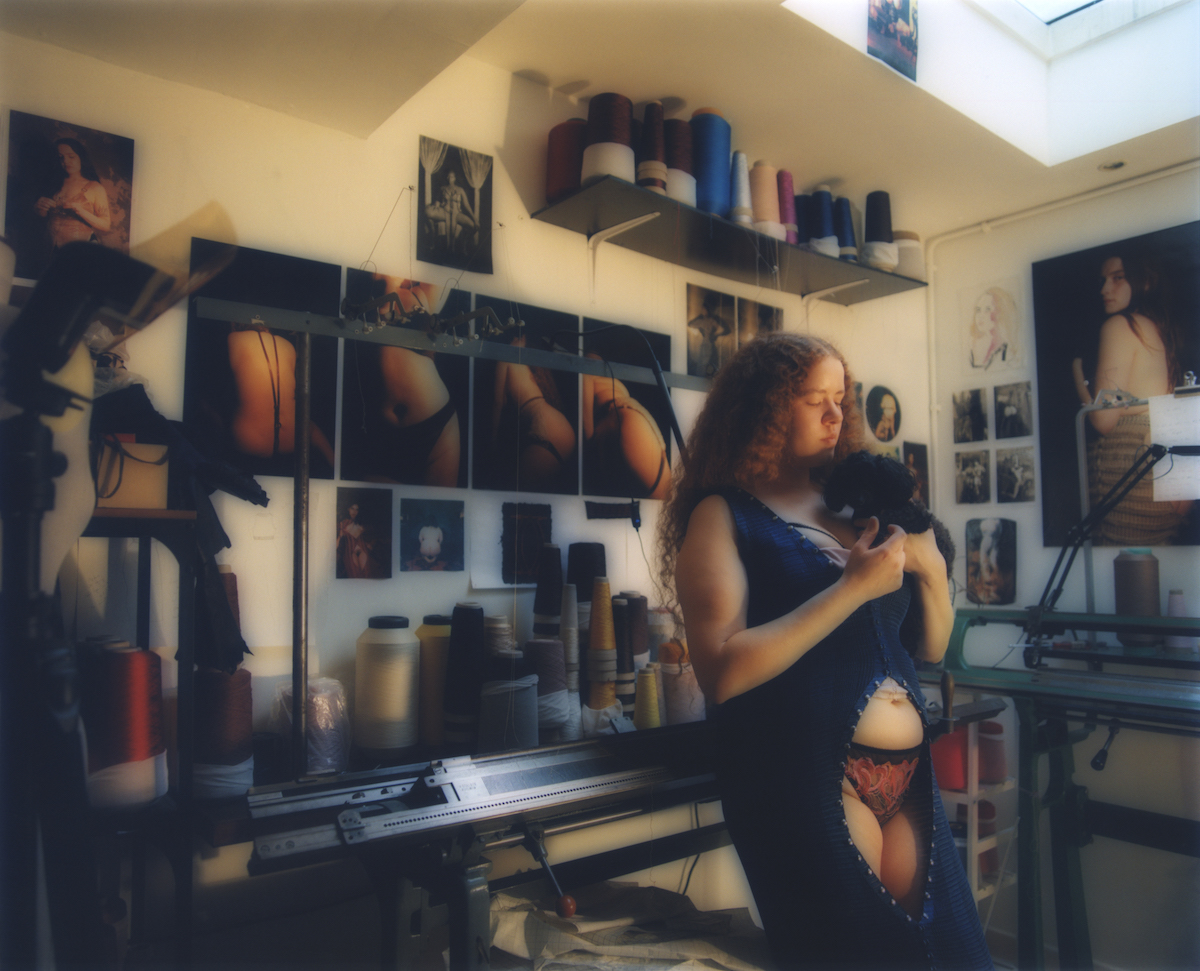Warmth, security, empowerment and self-assertion

It was on a cold Friday afternoon in February that I visited Ellis Jaz in her studio near Finsbury Park. I’ve photographed her on many occasions but always in my own studio in east London and I was curious to see her workspace. Ellis is a fashion designer whose sensual pieces, described as “intricately crafted erotic knitwear” have endlessly inspired me. Graduating from London’s Royal College of Art in 2019, Jaz made her fashion-week debut in SS21 in London and has since become a provocateur within the scene, reframing the status quo and broadening the horizons of fashion. Being able to photograph and interview her in her own surroundings was like laying a few jigsaw pieces in my image and understanding of her – and that of her creative generation in London.
Where did you grow up and what was family life like for you?
I grew up in the suburbs of North London, in Enfield. My family unit was just my mum and me, with lots of time at my grandma’s house. I’m mixed race, but very white-passing, so growing up with just my black family as a blonde-haired kid was pretty interesting.
What was your journey into fashion design?
I learned to crochet and knit from my grandma. Art was the only thing at school that I was always top in the class at so I stuck with it for gratification. At art school, I wasn’t the best anymore until a craft segment came up, where once again I stuck with what got me the most praise and started to specialise in textiles which lead me into fashion. Costume design was a massive influence on me as a kid and that was where I found the most dreamy beautiful magical work.

Your garments reveal parts of the body that we are used to covering. Something I’ve always interpreted as a celebration of the body. Could you describe your relationship with your body?
I’m 30 years old and came of age in the Gemma Ward, Abbie Lee, and Lily Donaldson era of fashion magazines. As a teenager, I spent the vast majority of my time on pro-anorexia live journal communities. I made friends there that I still have today. But it goes without saying that it was a hugely destructive way to be spending my time. Tumblr-era feminism helped me a lot as I entered my later teens and early twenties to intellectually feel more empowered about the natural realities of my body. However, the genuine unpicking of a body feeling like a dystopian landscape took a LOT of years to do. It took being asked to model for other designers around me to feel valid in my choice to use myself as a model for my own designs. I am quite a shy and introverted person so for a long time I felt too nervous to ask other people to model for my designs or to be fit models. Social anxiety was what made me start to use my own body for fittings. Through years of doing this, my body became a blank slate in my eyes and it became easier to view myself objectively and with less judgement. Which made it so easy to see the beauty in other people as well. Modelling for myself made the design process very intimate and personal, a lot of designs were based on intimate situations I was in and clothing that I felt I wanted in a private space.
The walls of your studio are filled with photographs and drawings. Are these sources of inspiration or works by yourself? And where do you usually search for inspiration?
There are photos of my work, some shot by me and others by other photographers. They are ideas I’m trying to figure out and my own scrappy little drawings that I get very self-conscious about other people seeing. Doris Kloster was the first fetish photographer I ever came across when I was a teenager. Her work is one of few that is a constant in the landscape of the studio walls.
What is it about her work that inspires you?
The feeling of warmth, security, empowerment and self-assertion that I saw in her imagery was a huge breakthrough for my young mind and my understanding of what was possible to create with fashion design and photography. I identify as a masochist in my sexual life. In my early obsessive thoughts and first experiences of fetish interactions, a feeling of confinement was very persistent for me. Seeing this kind of feeling portrayed through Doris’s photos was a massive feeling of YES. Through her work I found more and more fetish photographers to fall in love with. Erotic photo books are the source of the vast majority of imagery on my walls. Honestly, as I have become more comfortable with my body this desire for confinement is less fervent for me. This has definitely played a part in my current work with very stretchy knits intended to morph into the body rather than restrict it. The visuals remained but a feeling of serving the body and its shapes and abilities became more interesting than confining and restricting it.

How do you think living in London has influenced your practice?
I haven’t lived anywhere else for any longer than 5 months. London is my home. The ease of being here is probably what keeps me here as well as non-work responsibilities. It’s where I find it easiest to meet people, as a shy person being on my home turf is a big help. I think about setting up my studio in other cities but know I’ll always come back here. But aside from the practical realities of the materials and finishings that are available here, I don’t think it has affected my design work.
What is your daily studio routine like, do you work during the day or at night, is there a genre of music on repeat, regular drink or food?
I tend to get into the studio quite late, I luxuriate in the times when working for myself is getting to take up the majority of my time so I’ll get in around 1/2 pm and tend to stay overnight and head home around 7 am-ish. It’s not the safest feeling of areas where I have the studio so travelling through as people are starting to set up their shops feels a lot safer than going home late at night. I’m going through Patti Smith’s audiobooks at the moment. Tracy Bonham and Ani Difranco are artists I skipped over when I was younger so I’m catching up on them now. There are always gummy sweets on my table.
You are offered a small plane flying a custom message above London for a day: what would your message be?
Protect asylum seekers.

Words and Photography by Renate Ariadne
Notifications